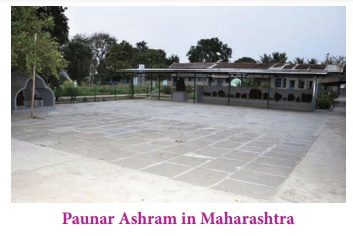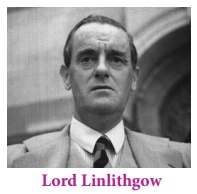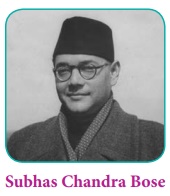History - Last Phase of Indian National Movement | 12th History : Chapter 7 : Last Phase of Indian National Movement
Chapter: 12th History : Chapter 7 : Last Phase of Indian National Movement
Last Phase of Indian National Movement
Last Phase of Indian National Movement
Introduction
The
outbreak of Second World War and Britain’s decision to involve India in the War
without consulting Congress ministries in provinces, provoked the leaders of
Indian National Congress and Gandhi. The Congress ministers resigned in
protest. Gandhi launched the individual Satyagraha in October 1940 to keep up
the morale of the Congress. In the meantime, the election of Subash Chandra
Bose as Congress President upset Gandhi this led to Bose’s resignation. Later
Bose started his Forward Bloc Party. After his escape to Germany and Singapore
formed Indian National Army and carried on his revolutionary activities
independent of the Congress movement.
The
Cripps Mission arrived in March 1942 to assuage the nationalists. But its
proposals bore no fruit. Gandhi decided to embark on the Quit India Movement in
August 1942. The British arrested all prominent leaders of the Congress and put
down the movement with an iron hand. Gandhi languished in jail until May 1944.
Then came the Cabinet Mission, whose plan was eventually accepted by the
Congress. However, Jinnah and the Muslim League, persisting in their Pakistan
demand, announced Direct Action Day programme that ignited communal riots in
East Bengal. Gandhi began his tour in the riot-hit Naokali. Rajaji’s compromise
formula and Wavell plan and the Simla conference convened to consider the
latter’s plan did not help to resolve the deadlock. In the meantime, Royal
Indian Navy revolted, prompting the British to quicken the process of
Independence. Mountbatten was appointed governor general to oversee
independence and the partition of the subcontinent into India and Pakistan.
Individual Satyagraha
Unlike in
the past, where Gandhi’s campaign had assumed a mass character, Gandhi decided
on the strategy of individual Satyagraha so that the war against fascism was
not hampered. The satyagrahis were
handpicked by Gandhi and their demand was restricted to asserting their freedom
of speech to preach against participation in the war. The chosen satyagrahi was
to inform the District Magistrate of the date, time and place of the protest.
On reaching there at the appointed time, and publicly declare the following:
‘It is wrong to help the British War effort with men or money. The only worthy effort
is to resist all war efforts with non-violent resistance’ and offer arrest.

The
programme began on October 17, 1940 with Vinobha Bhave offering Satyagraha near
his Paunar ashram in Maharashtra. Gandhi suspended the Satyagraha in December
1940. It was revived with some changes and groups offered satyagrahas from January 1941 and was eventually withdrawn in
August 1941.
August Offer
Individual
Satyagraha was the Congress response to the August offer by the Viceroy, Lord
Linlithgow. On August 8, 1940, Linlithgow following: Dominion status at some
unspecified future; expansion of the Viceroy’s Council (or the Executive
Council) to accommodate more Indians in it; setting up a War Advisory Council
with Indians in it; recognition of the rights of the minority; and a promise to
recognize the Indian peoples’ right to draft a constitution at some future date
after the war.

Removal of Bose from Congress
Congress
to even negotiate a settlement. The Congress, at this time, was losing its
sheen. Its membership had fallen from 4.5 million in 1938–39 to 1.4 million in
1940-41. Subhas Chandra Bose was isolated within the Congress, as most leaders
in the organisation’s top refused cooperation with him. Bose resigned and the
AICC session at Calcutta elected Rajendra Prasad as president. Bose founded the
Forward Bloc to function within the Congress and was eventually removed from
all positions in the organization in August 1939.

Lahore Resolution
The
arrogance displayed by the colonial government and its refusal to find a
meeting point between the promise of dominion status at some future date and
the Congress demand for the promise of independence after cessation of the war
as a pre-condition to support war efforts was drawn from another development.
That was the demand for a separate nation for Muslims. Though the genesis of a
separate unit or units consisting of Muslim majority regions in the Eastern and
North-Western India was in the making since the 1930s, the resolution on March
23, 1940, at Lahore was distinct.
There is
ample evidence that the Muslim League and its associates were given the
necessary encouragement to go for such a demand by the colonial administrators.
The resolution, then, gave the colonial rulers a certain sense of courage to
refuse negotiating with the Indian National Congress even while they sought
cooperation in the war efforts.
In many
ways the Congress at the time was weaker in the organizational sense. Moreover,
its leaders were committed to the idea that the British war efforts called for
support given the character of the Axis powers – Germany, Italy and Japan –
being fascist and thus a danger for democracy. Bose was the only leader who
sought non-cooperation with the allied forces and active cooperation with the
Axis powers.
All these
were the important markers of 1940. Things however changed soon with the
Japanese advance in Southeast Asia and the collapse of the British army. It led
to a sense of urgency among the colonial rulers to ensure cooperation for the
war efforts in India even while not committing to freedom. Winston Churchill,
now heading the war cabinet, dispatched Sir Stafford Cripps to talk with the
Congress.
Related Topics